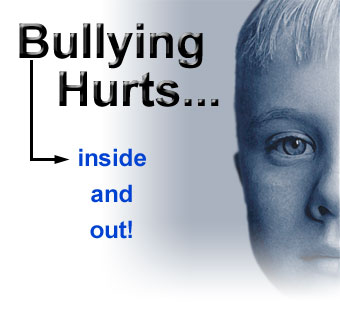 |
 |
 |
 |
 |
 |
It's estimated that 20% to 30% of students are bullies, victims of bullies, or bullies and victims of bullies. Bullying may include physical aggression, verbal harassment, name calling, and spreading rumors. Researchers at the University of California in Los Angeles examined peer and teacher reports of bullying in an attempt to understand more about this problem among youth.
A total of 1,985 sixth graders from an urban California community completed anonymous surveys about bullying in their schools. Students were asked to nominate up to four classmates who bullied others. Bullying was defined as starting fights and pushing other kids around, putting down or making fun of others, or spreading nasty rumors about others. Students were also asked to nominate up to four students who were victimized by bullies and to identify the classmates they considered the most popular in the class. In addition, students answered questions about themselves designed to measure social anxiety, depression, and loneliness. Teachers rated students according to their popularity among peers, conduct problems (such as starting fights, arguing, and getting into trouble), and internalizing problems (such as sadness, worrying, and frequent crying).
Twenty-two percent of the children in the survey were involved in bullying. Seven percent of the students perpetrated bullying, 9% of the students were victims of bullies, and 6% of the students were both bullies and victims. Compared to students who were not involved in bullying, students involved in bullying had difficulty getting along with classmates and had more conduct problems. However, despite these problems, bullies were rated by teachers and students as more popular among their peers and had the lowest levels of depression, social anxiety, and loneliness. In contrast, victims of bullies were least popular among their classmates and had the highest levels of depression, social anxiety, and loneliness. Bully-victims were especially troubled - they were by far the most socially ostracized by their peers, were most likely to have conduct problems, and were more likely to have depression and loneliness.
What This Means to You: Students who are victims of bullies - even those who bully themselves - are at increased risk for depression, social problems, and psychological distress. What can you and your child do? Although children can resolve many incidences of bullying on their own by standing up to the bully or walking away, be sure to take seriously your child's reports of the bullying. If the bullying problem persists or if you sense that your child needs help coping, get involved by talking to your child's teacher or school counselor.
Disclaimer: This information is not intended be a substitute for professional medical advice. It is provided for educational purposes only. You assume full responsibility for how you choose to use this information.
Source: Jaana Juvonen, PhD; Sandra Graham, PhD; Mark A. Schuster, MD, PhD; Pediatrics, December 2003
Reviewed by: Steven Dowshen,
MD
Date reviewed: January 2004